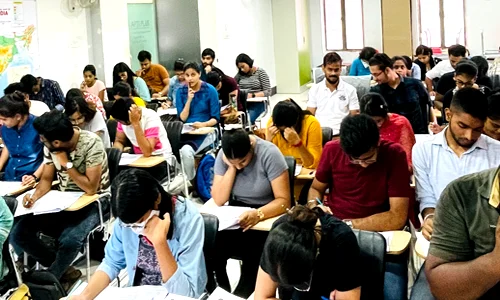



The National Intelligence Grid operates nationwide, linking travel, financial, and telecom databases to give agencies a real-time view of suspects. It strengthens counter-terrorism and breaks intelligence silos, but raises privacy, cybersecurity, and accountability concerns due to limited legislative backing under the Puttaswamy framework today.
Click to View MoreSanchar Saathi boosts telecom security through tools like CEIR and TAFCOP, blocking stolen devices and fraudulent SIMs. But the mandate to pre-install a non-removable app on smartphones has raised privacy concerns. Moving ahead requires balancing security with strong data protection, transparency, public trust, and industry cooperation.
Click to View MoreOperation Crystal Fortress dismantled a major transnational meth cartel, seizing 328 kg of meth and advancing India’s Drug-Free India goal. It highlights rising synthetic drug threats and shows how multi-agency action, tech tools like NIDAAN, NCORD coordination and demand-reduction drives strengthen India’s anti-narcotics strategy.
Click to View MoreIndia’s post-26/11 coastal security setup uses a three-tier structure of Marine Police, Coast Guard, and Navy, coordinated by the NMSC and supported by IMAC. Yet gaps in coordination, weak marine policing, and incomplete surveillance persist. Strengthening local forces and full maritime domain awareness are essential.
Click to View MoreThe 2025 UN Convention Against Cybercrime establishes a global framework for 112 nations, surpassing the Budapest Convention. It criminalizes ransomware, fraud, and child abuse, standardizes evidence sharing, and strengthens international law enforcement against transnational cybercrime, creating a unified approach to digital threats.
Click to View MoreCountering extremism demands a balanced approach that combines strong security measures with social inclusion, education, and community engagement. Addressing root socio-economic grievances alongside proactive prevention and global cooperation can ensure long-term stability and protect India’s democratic and pluralistic values.
Click to View MoreThe Crime in India 2023 report shows rising cybercrime and violence against Scheduled Tribes. It urges strengthening cybersecurity, improving digital literacy, and tackling social vulnerabilities. Policymakers and law enforcement must adapt rapidly to evolving crime patterns to ensure effective prevention and protection.
Click to View MoreThe decline of Maoist extremism highlights that Left-Wing Extremism is solvable through both security and inclusive development. True victory lies not in arms but in addressing socio-economic gaps with roads, schools, healthcare, justice, and equitable growth in neglected regions.
Click to View MoreLadakh’s statehood and Sixth Schedule demand arises from lost representation post-2019. The Leh Apex Body and Kargil Democratic Alliance seek safeguards for its tribal population, fragile ecology, and land rights, but the constitutional amendment poses a federal challenge balancing autonomy with security.
Click to View MoreIndia is deploying AI in its power grid for real-time risk detection, cyber security, and market surveillance, enhancing resilience amid renewable growth. This initiative strengthens grid stability, safeguards markets, reduces cyber vulnerabilities, and promotes indigenous innovation, aligning with global best practices.
Click to View MoreMission Sudarshan Chakra is a 10-year strategic initiative to build an indigenous national defence shield. Guided by a high-level committee, it integrates technologies like ‘Akashteer,’ enhancing offensive and defensive capabilities to safeguard India from aerial and unconventional threats effectively.
Click to View MoreTensions between the Kuki-Zo community and Naga groups in Manipur are escalating due to complex ethnic, infrastructural, and security issues. The Kuki-Zo Council's push for improved connectivity, "German-Tiger Road," is met with opposition from the Foothills Naga Coordination Committee, highlighting land claims, mobility disruptions, and tribal governance demands.
Click to View More
© 2025 iasgyan. All right reserved